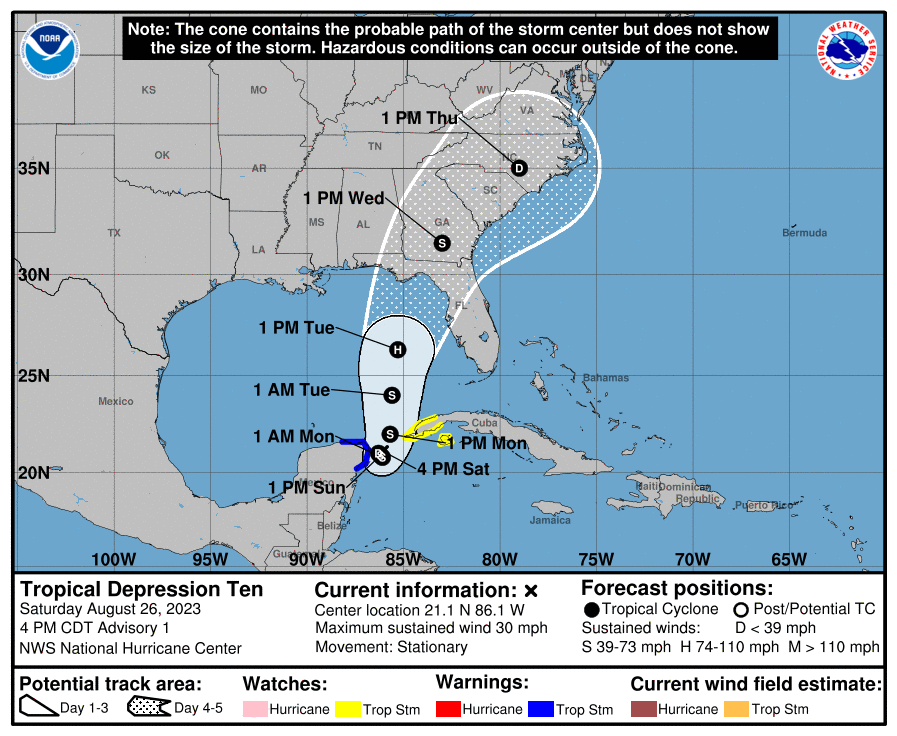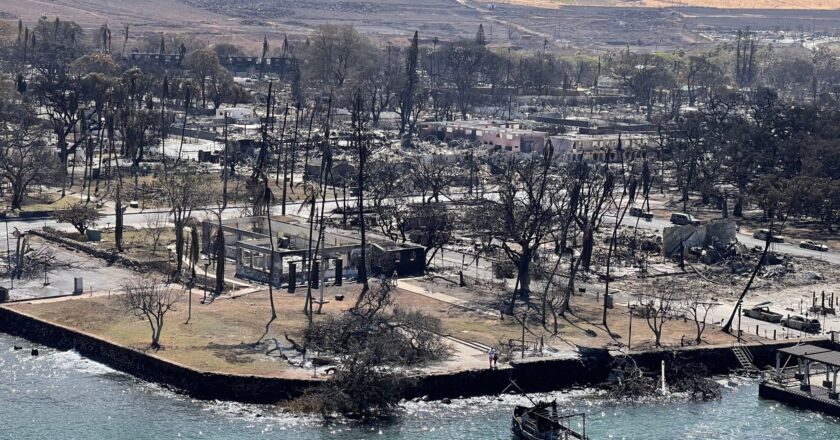Two natural disasters, thousands of miles apart, serve as reminders of the broader implications of our warming planet.
Hurricane Idalia formed off the coast of Cancun on Aug. 26 and slowly moved northward, eventually reaching the Gulf of Mexico on August 29. There, it encountered unusually warm sea surface temperatures of around 90 °F, causing it to rapidly intensify into a strong Category 4 hurricane.
The storm then slightly weakened and struck the big bend of Florida as a high-end Category 3 hurricane, bringing a record 10.5 feet of storm surge to the coastal town of Cedar Key. Towns farther inland, like Perry, experienced 100+ mph winds that downed countless trees and destroyed roofs.
The storm then moved northeast, bringing flooding rains and multiple tornadoes to Georgia and the Carolinas before tracking off the coast into the Atlantic Ocean. According to Fox Business, this hurricane is estimated to have caused over $12 billion in damages.

landfall in Florida. Photo Courtesy of the National Oceanic and Atmospheric Administration.
Despite this, experts say that Hurricane Idalia could have been even more destructive. Just before making landfall, the hurricane turned away from Florida’s capital, Tallahassee, sparing 200,000 people from the destructive core of the storm.
“Had that turn not occurred, there would have been much more devastating impacts here in Tallahassee,” National Weather Service Meteorologist Kelly Godsey said.
Additionally, the peak storm surge hit Florida during low tide, meaning that the surge at Cedar Key was three feet lower than what it could have been.
These near misses and fortunate circumstances, however, do not diminish the seriousness of Hurricane Idalia’s impact. They serve as reminders of the unpredictable and potentially catastrophic nature of hurricanes like Idalia, especially since these storms are expected to become stronger and more frequent due to rising ocean temperatures.
Thousands of miles away from Florida on the island of Maui, residents felt the effects of climate change in a different way. Due to an ongoing El Niño event, drought had gradually developed across much of Hawaii over the past several months, creating the perfect conditions for wildfires to spread rapidly.
On Aug. 7, 2023, a series of bushfires ignited across Maui’s most drought-stricken areas. One of these bushfires began northeast of the town of Lahaina and rapidly spread downslope due to the dry winds and parched vegetation. Soon, the entire town was enveloped in flames.
Most residents had little to no warning because the civil defense sirens were reserved for tsunamis. Additionally, mobile warnings failed because high winds, power outages and flames took out the cell service network. As a result, thousands of people were forced to flee at the last minute and over 115 people were killed. More than 2,300 structures were destroyed, leading to an estimated four to six billion dollars in property damages and business interruption costs.
According to the US National Climate Assessment released in 2018, drought conditions are becoming more extreme and common in Hawaii and other Pacific islands, leading to greater wildfire potential.
After visiting damaged areas in both Maui and Florida, President Joe Biden emphasized the need to bolster American infrastructure in order to better withstand the impacts of a changing climate.
“I don’t think anybody can deny the impact of the climate crisis anymore. Just look around. Historic floods, I mean historic floods. More intense droughts. Extreme heat.” Biden told reporters during a press conference in the White House.
His message underscores the message that the country must be ready for future wildfires, hurricanes, and severe storms that are anticipated to occur with greater frequency and strength.
For the GA community, this may not be news from afar. Two September ago, when the remnants of Hurricane Ida impacted the Northeast, the area experienced widespread flash flooding and several tornadoes, one of which barely missed Germantown Academy.
Thus, it may be imperative for the GA community to foster education on environmental sustainability, stay well informed about severe weather, and create a community that is prepared for disasters in order to successfully face a changing future.
Sources:
- https://www.cbsnews.com/news/biden-speech-press-conference-climate-disasters-hurricane-idalia-maui-wildfires/
- https://www.washingtonpost.com/nation/2023/08/31/cedar-key-hurricane-idalia-damage-florida/
- https://www.usatoday.com/story/news/nation/2023/09/02/perry-florida-becomes-a-tarp-village-after-hurricane-idalia-power-trees/70751465007/
- https://www.foxbusiness.com/economy/hurricane-idalia-cost-20b-damages-lost-economic-activity-moodys-analytics
- https://www.nbcnews.com/news/us-news/hurricane-idalia-caused-even-damage-florida-didnt-rcna102985
- https://www.cnn.com/videos/us/2023/08/30/exp-hurricane-idalia-climate-change-weir-lkl-083003aseg1-cnni-us.cnn
- https://www.cnn.com/interactive/2023/08/hawaii-wildfires-timeline-maui-lahaina-dg/index.html
- https://www.cnn.com/2023/08/09/us/climate-change-reason-maui-fire/index.htm

